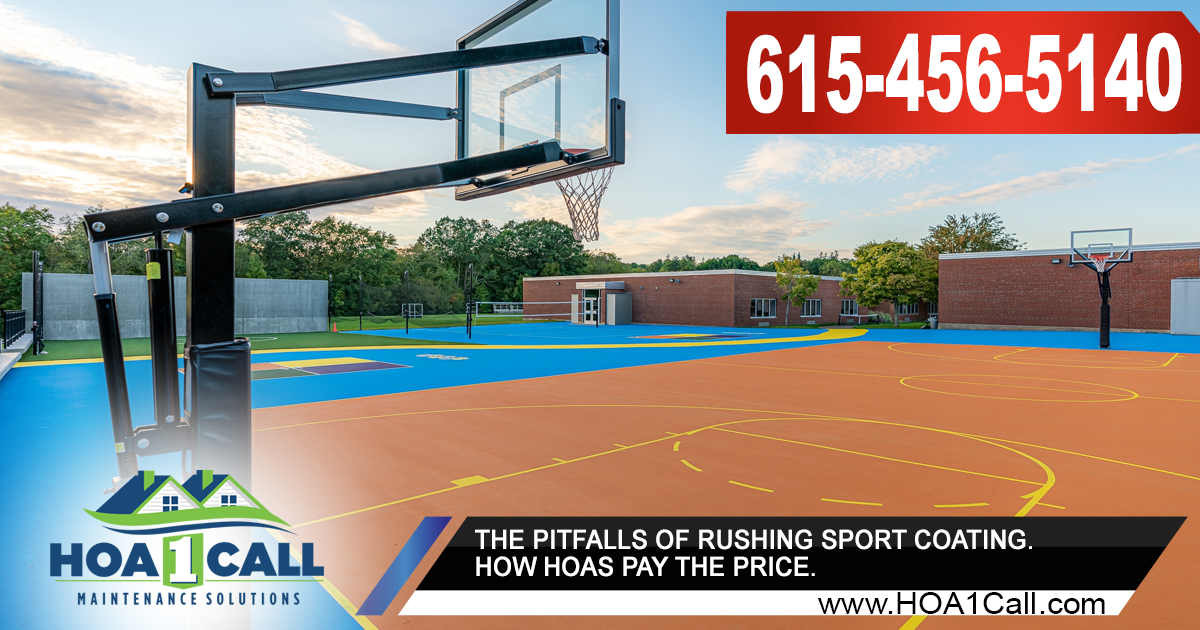In the quest to maintain vibrant and appealing recreational spaces, homeowners' associations (HOAs) often face the temptation to rush sport coating projects on tennis, basketball, and pickleball courts. Whether it's pressure to meet seasonal deadlines or a desire to swiftly address wear and tear, the decision to expedite these projects can have far-reaching negative effects on the HOA and its community members.
Sport coating, which typically involves resurfacing and repainting court surfaces, plays a vital role in ensuring the safety, functionality, and aesthetic appeal of these recreational amenities. However, cutting corners or disregarding proper procedures in the pursuit of speed can lead to a host of problems that ultimately undermine the HOA's goals.
One of the most immediate consequences of rushing sport coating projects is subpar workmanship. Proper surface preparation, including cleaning, repairing cracks, and applying primers, is essential for achieving a durable and long-lasting finish. When these steps are hurried or skipped altogether, the new coating is more prone to premature wear and deterioration, resulting in costly repairs or rework down the line.
Moreover, applying sport coatings in unfavorable weather conditions can exacerbate these issues. Extreme temperatures, high humidity, or rain can compromise the adhesion and curing of the coating, leading to uneven finishes, bubbling, or peeling. Not only does this compromise the appearance of the courts, but it also poses safety risks to players due to slippery or uneven surfaces.
In addition to the tangible consequences of rushed sport coating projects, there are also intangible but equally significant impacts on the HOA's reputation and community morale. Residents expect well-maintained and safe recreational facilities as part of their HOA dues, and any perceived neglect or shoddy workmanship can erode trust and satisfaction.
Furthermore, hasty decisions regarding sport coating projects can strain relationships between the HOA board, property managers, and residents. Communication breakdowns, disputes over project timelines, and dissatisfaction with the results can create tensions within the community and detract from the sense of unity and cooperation that HOAs strive to foster.
So, what can HOAs do to avoid these pitfalls and ensure successful sport coating projects? Firstly, they should prioritize thorough planning and preparation, including conducting site inspections, obtaining multiple bids from reputable contractors, and establishing realistic timelines. Rushing into a project without careful consideration of these factors is a recipe for disappointment and frustration.
Secondly, HOAs should prioritize quality over speed when it comes to selecting contractors and materials for sport coating projects. Working with experienced professionals who have a track record of delivering high-quality results and adhering to industry best practices is essential for avoiding costly mistakes and ensuring the longevity of the court surfaces.
Finally, open and transparent communication with residents is key to managing expectations and fostering a sense of community involvement in sport coating projects. Providing regular updates on project progress, soliciting feedback, and addressing concerns in a timely manner can help build trust and cooperation within the community.
In conclusion, while the temptation to rush sport coating projects on tennis, basketball, and pickleball courts may be strong, the negative consequences for HOAs far outweigh any perceived benefits. By prioritizing quality, proper planning, and communication, HOAs can avoid the pitfalls of hasty decisions and ensure that their recreational amenities continue to serve as safe, attractive, and enjoyable spaces for residents to gather and play.
